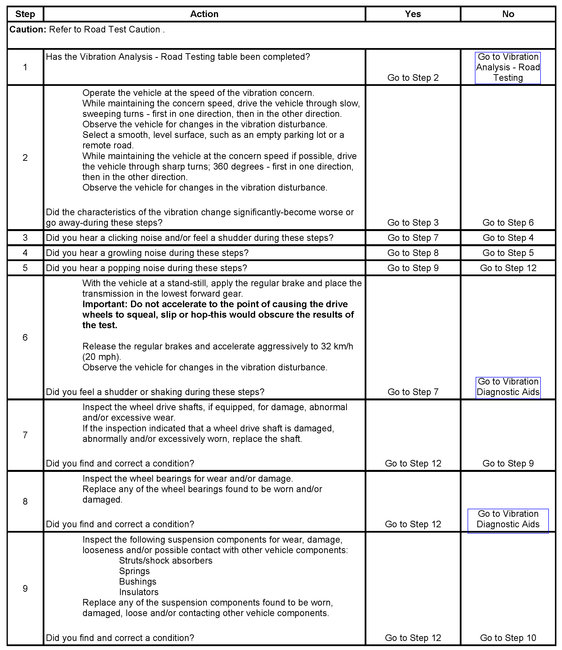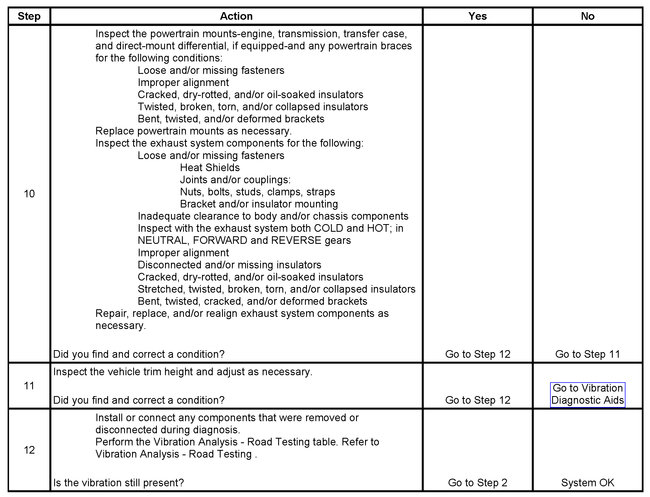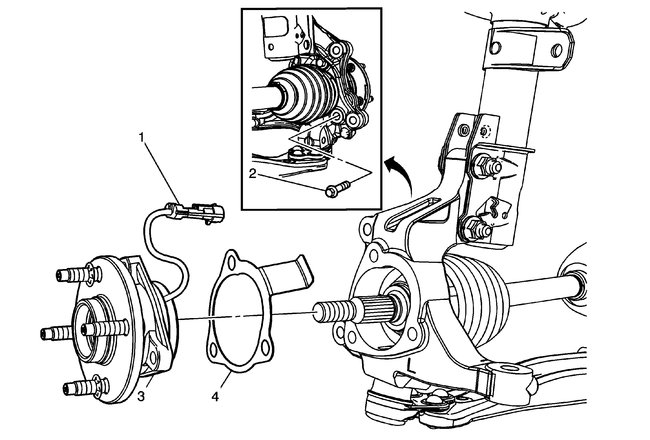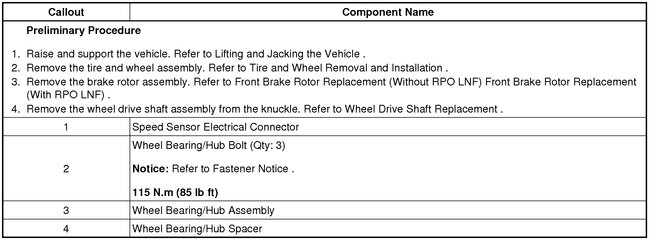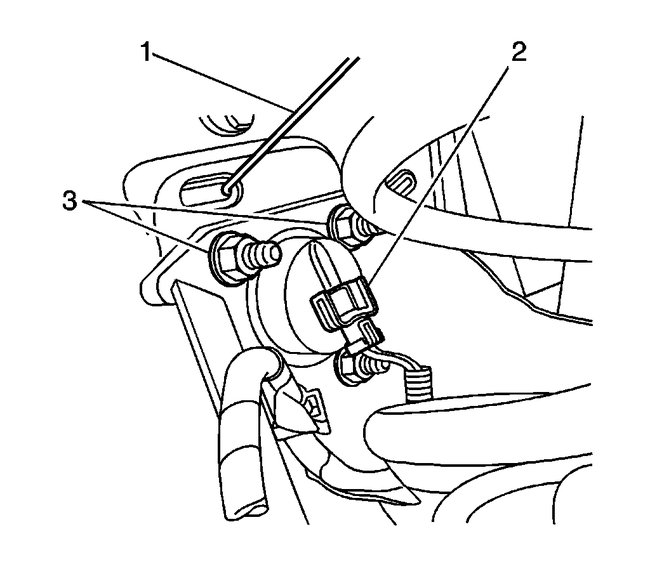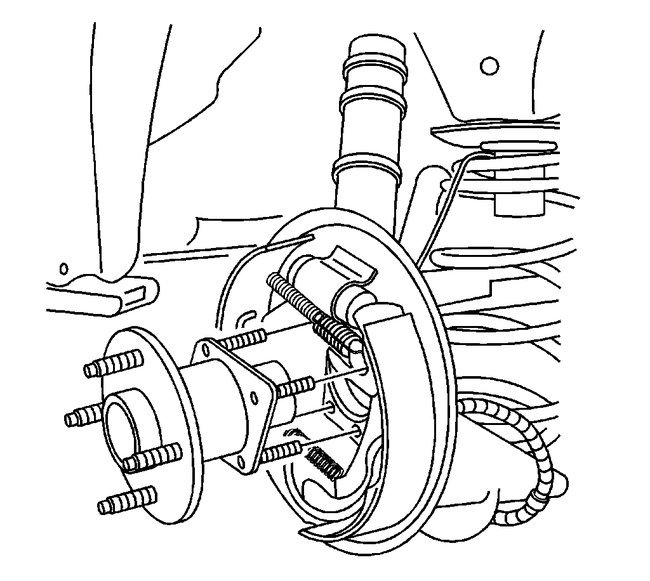Hi and thanks for using 2CarPros.
If the sound changes with vehicle speed, my first guess is a wheel bearing. You indicated you don't believe that is the cause. How was it checked?
Is there anything you can do to change the sound? Does turning change the pitch?
Here are directions to diagnose a hum or vibration. Pictures 1 and 2 correlate with these directions and describe how and what to check.
Vibration Analysis - Hub and/or Axle Input
Test Description
The numbers below refer to the step numbers on the diagnostic table:
2. This test will determine the effect of turning input on the vibration.
6. This test will determine the effect of an initial heavy torque load on the vibration.
7. Damaged or worn wheel drive shafts may cause a noise or vibration that may be transferred into the passenger compartment.
8. Damaged or worn wheel bearings may cause a noise or vibration that may be transferred into the passenger compartment.
9. Damaged or worn suspension components may cause a noise or vibration that may be transferred into the passenger compartment.
10. Damaged or worn power-train mounts and/or exhaust mounts may cause a noise or vibration that may be transferred into the passenger compartment.
11. Incorrect trim height may cause binding and/or interference between components that may produce a vibration.
_____________________________________________
If you determine it is a wheel bearing, which is what I suspect based on your description, here is a link that shows in general how to replace one:
https://www.2carpros.com/articles/bearing-hub-replacement
Here are the directions specific to your vehicle for replacement:
Front hub bearing see pictures 3 and 4
__________________________
Rear bearing replacement with disc brakes:
Rear Wheel Bearing and Hub Replacement (Disc Brake)
Removal Procedure
1. Raise and support the vehicle. Refer to Lifting and Jacking the Vehicle .
2. Remove the tire and wheel assembly. Refer to Tire and Wheel Removal and Installation (See: Wheels and Tires > Removal and Replacement > Tire and Wheel Removal and Installation) .
3. Without disconnecting the hydraulic brake flex hose, remove and support the rear brake caliper and bracket as an assembly, and remove the rear brake rotor. Refer to Rear Brake Rotor Replacement .
4. Disconnect the electrical connector from the wheel speed sensor.
See picture 5
5. Remove the wheel bearing/hub assembly mounting nuts.
6. Remove the wheel bearing/hub assembly and the disc brake backing plate from the rear axle assembly.
Installation Procedure
See picture 5
1. Install the wheel bearing/hub assembly and the brake backing plate to the rear axle assembly.
Notice: Refer to Fastener Notice .
2. Install the wheel bearing/hub assembly mounting nuts to the axle assembly. Tighten the nuts evenly, in a cross-pattern.
Tighten the nuts to 45 N.m (33 lb ft) plus 30 degrees.
3. Connect the electrical connector to the wheel speed sensor.
4. Install the brake rotor, and install the brake caliper and bracket as an assembly. Refer to Rear Brake Rotor Replacement .
5. Install the tire and wheel assembly. Refer to Tire and Wheel Removal and Installation (See: Wheels and Tires > Removal and Replacement > Tire and Wheel Removal and Installation) .
6. Lower the vehicle.
______________________________
with rear drum brakes:
Rear Wheel Bearing and Hub Replacement (Drum Brake)
Removal Procedure
1. Raise and support the vehicle. Refer to Lifting and Jacking the Vehicle .
2. Remove the tire and wheel assembly. Refer to Tire and Wheel Removal and Installation (See: Wheels and Tires > Removal and Replacement > Tire and Wheel Removal and Installation) .
3. Remove the brake drum. Refer to Brake Drum Replacement .
See picture 5
4. Remove the plug from the drum brake actuator access hole in the backing plate. Using the access hole, install a support (1) for the brake backing plate.
5. Disconnect the electrical connector (2) from the wheel speed sensor, if equipped with ABS.
6. Remove the wheel bearing/hub assembly mounting nuts (3).
See picture 6
7. Remove the wheel bearing/hub assembly from the rear axle assembly and brake backing plate.
Installation Procedure
See picture 6
1. Install the wheel bearing/hub assembly to the brake backing plate and the rear axle assembly.
See picture 5
Notice: Refer to Fastener Notice .
2. Install the wheel bearing/hub assembly mounting nuts (3) to the axle assembly. Tighten the nuts evenly, in a cross-pattern.
Tighten the nuts to 45 N.m (33 lb ft) plus 30 degrees.
3. Connect the electrical connector (2) to the wheel speed sensor, if equipped with ABS.
4. Remove the support (1) from the brake backing plate.
5. Install the plug to the drum brake actuator access hole in the backing plate.
6. Install the brake drum. Refer to Brake Drum Replacement .
7. Install the tire and wheel assembly. Refer to Tire and Wheel Removal and Installation (See: Wheels and Tires > Removal and Replacement > Tire and Wheel Removal and Installation) .
8. Lower the vehicle.
______________________________
Let me know if this helps.
Joe
Images (Click to make bigger)
Tuesday, January 15th, 2019 AT 6:20 PM
